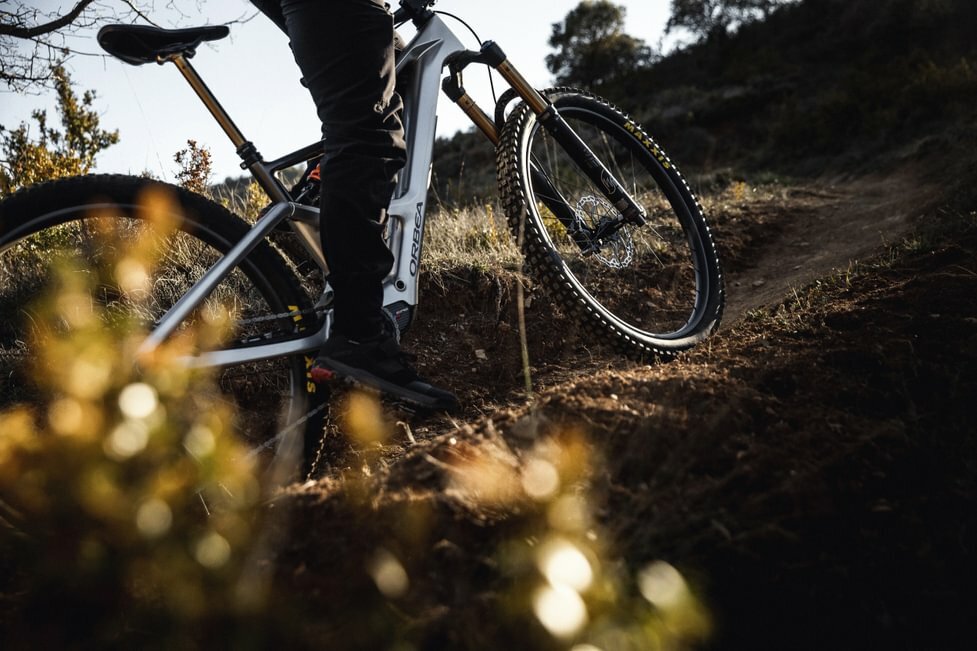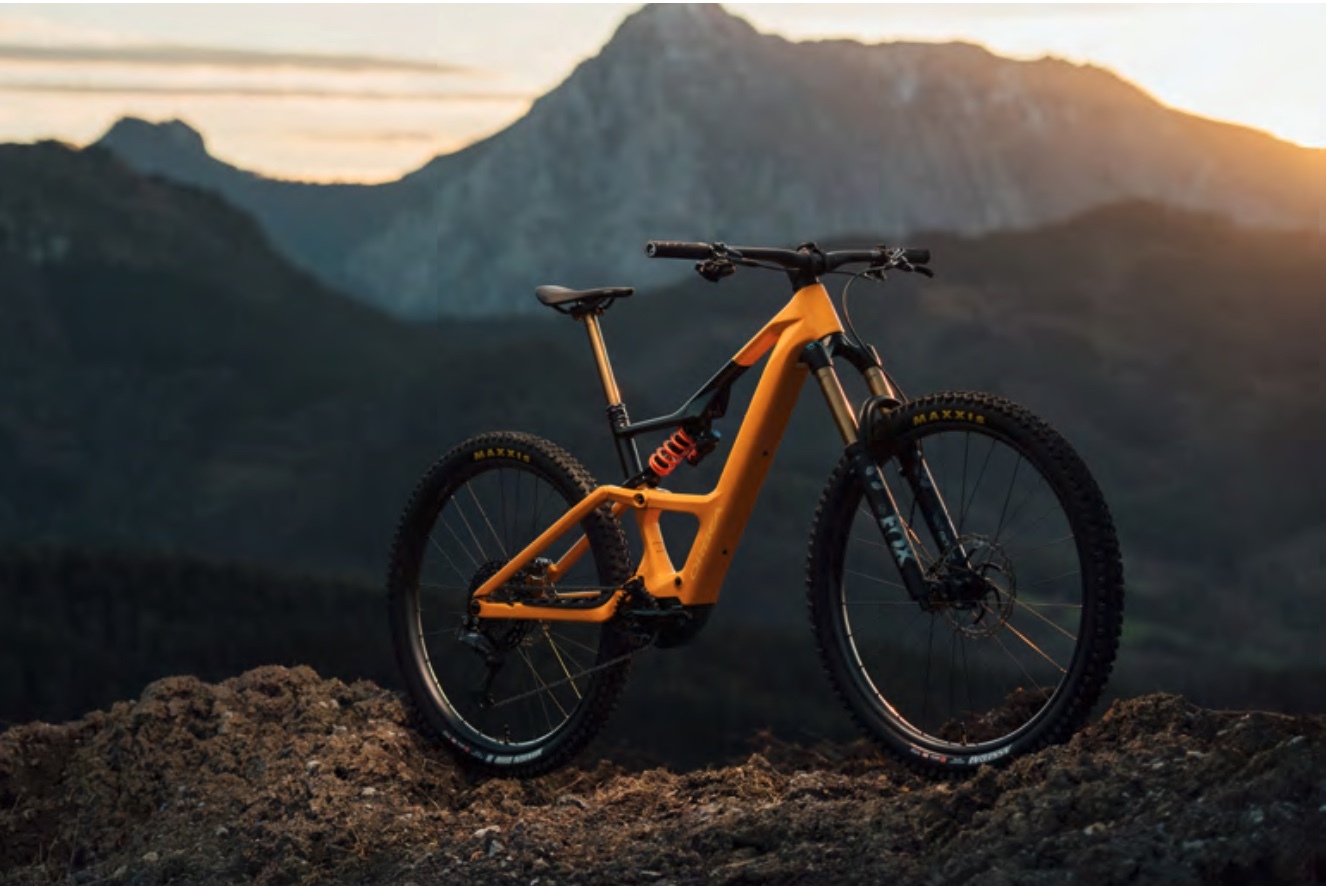The Rise of the Rise!
In the realm of mountain biking discussions of years gone by, I'd often hoped that new technology would produce a full-suspension e-MTB that retains the lightweight, playful character of a mechanical bike. The industry seemed to struggle to design a lighter e-bike that combined both a robust spec with an adequate motor torque.

Recognising this void in the market, Orbea launched the Rise range in 2020. From my first test ride, it was clear the Rise represented a significant shift in the eMTB landscape. I was among the many instantly drawn to the bike, and I've been a Rise M-Team owner ever since it was launched. My previous review delves into the reasons for my enthusiasm, but in essence:
-Robust, trail-worthy components
- Agile and confidence-inspiring handling on descents
- Light enough to be realistically ridden without electrical assistance
The lightweight e-mountain bikes were a fringe category until the Orbea Rise came along. It revolutionized the market with its innovative design. Riders in the UK flocked to experience the Rise's unique features, propelling it to immense popularity.
For over four years, the Rise has reigned supreme in the lightweight e-MTB category, inspiring a wave of competitors to come forward. Now, with new contenders emerging and a drive to surpass their own creation, Orbea has upped their game with the release of the Orbea Rise Mk 3!

Two choices of the Rise Mk 3 : SL vs LT
Orbea have released two styles of the Mk 3, the SL (Super Light) and the LT (Long Travel). The two variations, as the names imply, lean into two slightly different camps.
The SL’s motive is to produce an awesome all-round eMTB trail bike with an emphasis on shaving as much weight off the bike as possible.
While the LT’s main objective is to use the Rise’s lightweight frame, motor and battery as a basis to build up a highly capable Enduro bike.

As a big fan of Enduro tracks and big days out riding technical single-track, the Orbea Rise LT is going to be far more suitable bike for me, and we envisage the LT being the most popular variation out of the two.
For the purpose of simplicity, the LT will be used as the comparison between the Mk 2 and Mk 3 from hereon in.

Three clear ways the Rise LT has improved:
1) Slacker head angle & more suspension travel
2) Improved battery design & capacity
3) More Torque than the original (if required)

1) Slacker head angle & larger suspension platform
While I love the original model, its trail-oriented setup often felt a little under-gunned when pushed into enduro territory.
The Mk 2's 140/140mm or 150mm/140mm suspension and 65.5-degree head angle worked well for most trails, but the Mk 3 addresses this with key upgrades.

Fundamentally, the Orbea Rise LT 2025 Mk 3 is a burlier version built for demanding enduro trails. Its 160mm/150mm travel offers true enduro capability, while the 1.5-degree slacker head angle boosts control and confidence on descents.
Best of all, unlike traditional bikes where slacker angles hinder climbing, eMTBs negate that trade-off with pedal assist. This upgrade is a total win-win.

2) Improved Battery design & Capacity
Batteries, batteries, and more batteries! Can you ever have enough? Well, yes you definitely can, but you can also have too few, as I found out. At 13 stone and riding an XL, my original 360Wh battery was capable of 2-3 hours in the mid-setting before running out. While I never really suffered from range anxiety (as it's still feasible to pedal the bike when the battery goes), it did force me to plan shorter routes than I would have liked.
So, while the reduced weight looked good on paper, the reality was I needed to add some weight to go further. Shortly after, I ordered a 252Wh range extender, taking the total capacity to 612Wh.

For me, it really is a delicate trade-off between choosing the right amount of battery to keep your bike feeling as light and balanced as possible, while not being frustrated by the available range.
Personally, I wouldn't like to be using a bike with less than 600Wh (either internal or internal + extender).

Fortunately, the Orbea Rise 2025 MK 3 is now available to purchase with a 630Wh internal battery from the offset. This is the one I would choose, and I imagine the vast bulk of riders will too.
Also, for those monster days out, you can still fit a 210Wh range extender, taking the total up to a massive 840Wh.

Additionally, the new battery design is another major upgrade on the Rise Mk 2. Orbea has worked to develop an industry-leading battery that packs the most “Wh per kg” possible.
This means it keeps in the spirit of a lightweight eMTB by allowing MK 3 owners to increase the battery capacity of the bike while minimizing the weight gain. When compared to similar-sized batteries from most other manufacturers, the Rise 2025 Mk 3 battery is estimated to be 10-15% lighter than its peers.

3) Two new systems to deliver power (RS & RS+)
Since the boom in full-suspension electric mountain bikes over the past 5 years, two distinct styles have emerged: lightweight eMTBs, and slightly heavier, full-power bikes. While lightweight eMTBs have their advantages, one trade-off is often less torque, typically around 20-40 Nm less.
The Orbea Rise Mk 2, for example, had 60 Nm of torque compared to the 85 Nm of its bigger sibling, the Orbea Wild.

From my own personal experience, I ride both on solo explore missions and with a group of eMTB riders who all have ‘full-power’. When I grab half a day to explore a new route on my Rise, I happily run in “Trail” mode most of the time, with occasional boosts for steep climbs.
This mode offers a great workout while still conquering climbs quickly, and it strikes a good balance for battery life.

However, when I'm out ‘track smashing’ with a few mates who like to fly about at race-pace, on their full-power bikes. Chasing them up every climb at full speed all day could be made a bit easier.
While it's my favorite way to spend a day, a little extra power would be welcome on the climbs.

Thankfully the Orbea Rise Mk 3 has completely sorted this issue by creating two motor tunes! The RS mode offers up to 54 Nm of torque (similar to the Mk 2).
Within 30 seconds, you can switch to RS+ mode, offering 85 Nm –which is perfect for hanging with full-power eMTBs all day.

Best thing about the new Orbea Rise LT 2025?
Put simply, Orbea has done it again! The Rise LT 2025 (Mk 3) sets a new standard for lightweight eMTBs. It’s ability to behave as 2 separate motor systems is positively unique. Plus, the bigger suspension and slacker head angle transform it into an absolute enduro beast!
The best part?
Some Rise LT 2025 builds still come in around an unbelievably light 18kg. The Mk 3 packs in major upgrades yet remains light and playful – what more could you want?

To explore the full Orbea Rise range, including the LT, you can check them out here. You'll find a handy comparison guide to see the differences between models. Contact us with any questions – we're always happy to help!

Posted by Paul Hoyle on 2nd May 2024
Need any further help in choosing your next bike? Drop us a line on 01254 959345, or alternatively fill out the form below. We'd be glad to help.




